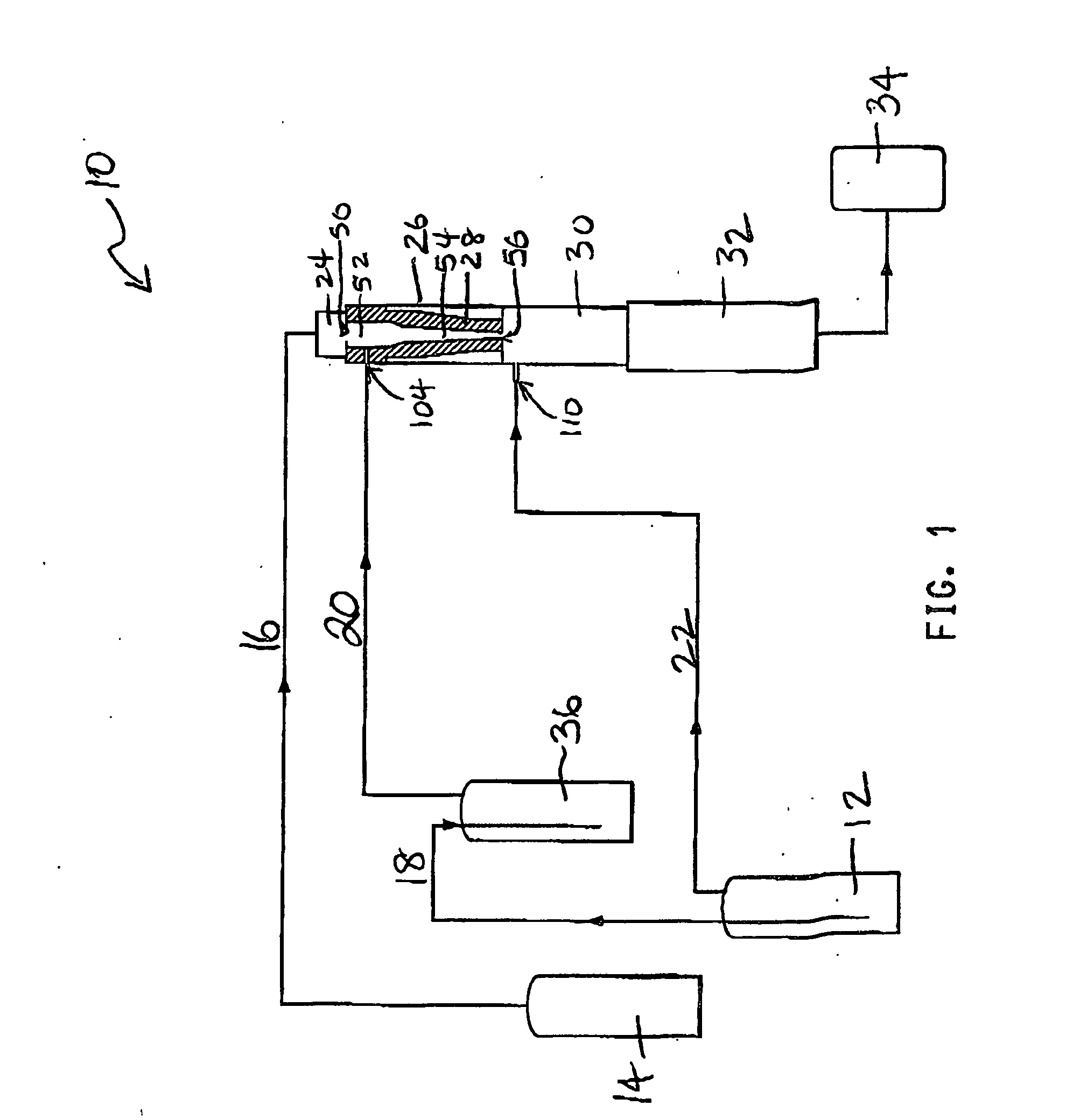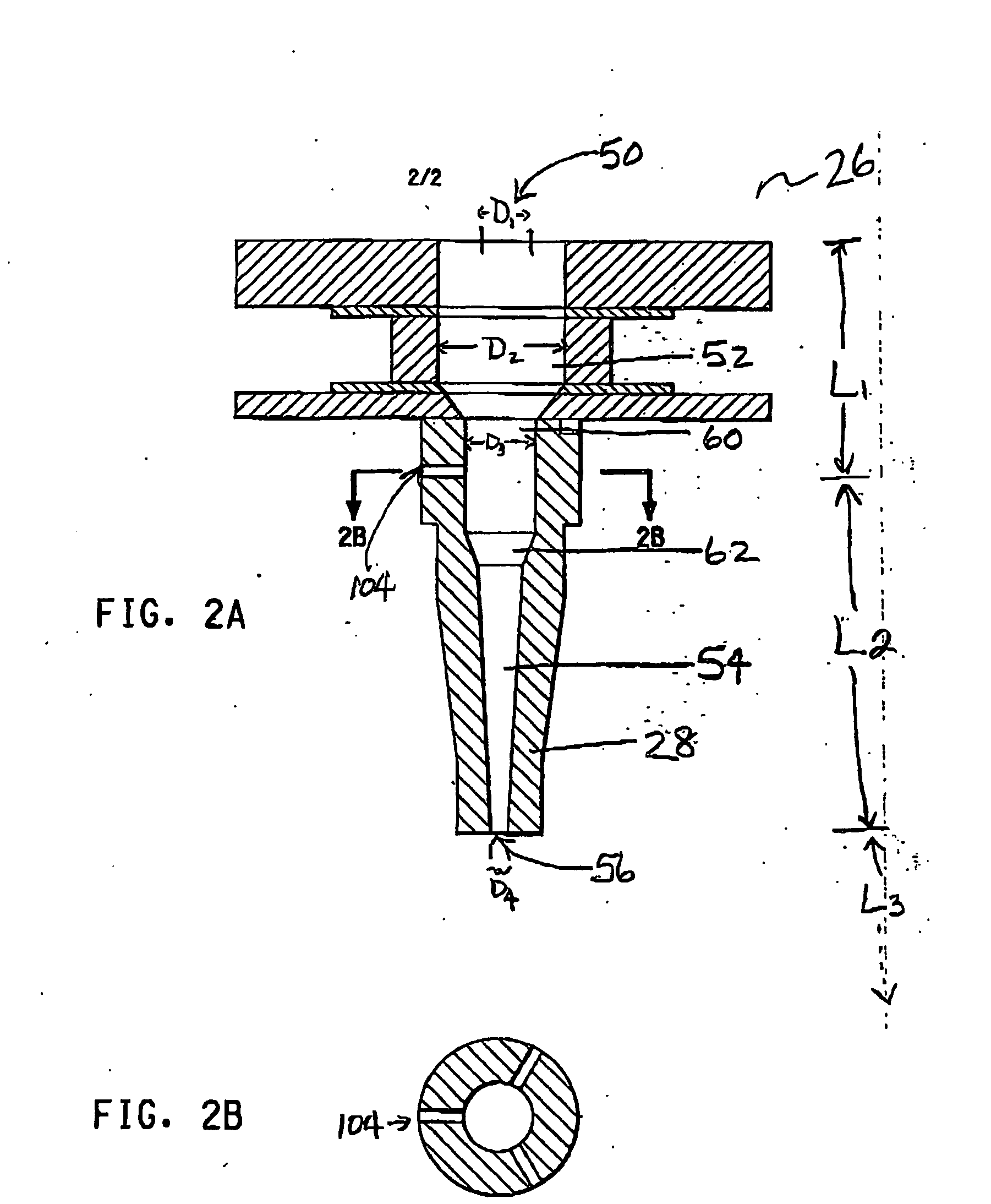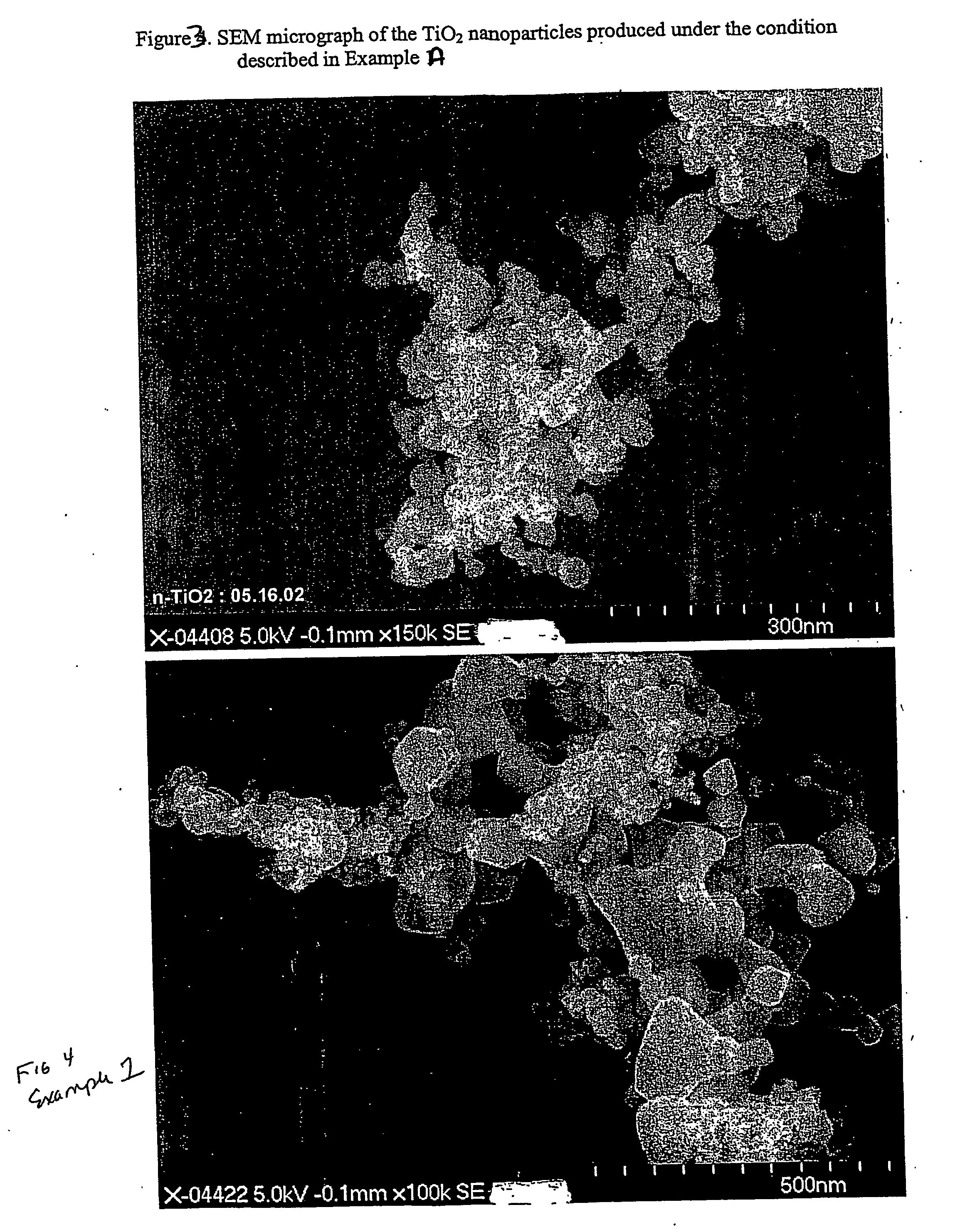Method of producing nanoparticles using a evaporation-condensation process with a reaction chamber plasma reactor system
a plasma reactor and evaporation condensation technology, which is applied in the direction of liquid-gas reaction process, chemical/physical/physico-chemical process, synthetic resin layered products, etc., can solve the problems of large pressure gradient, difficult to obtain desired properties, large and expensive pumps, etc., and achieve the effect of reducing the temperature of the reaction mixture and the produ
- Summary
- Abstract
- Description
- Claims
- Application Information
AI Technical Summary
Benefits of technology
Problems solved by technology
Method used
Image
Examples
examples
[0076] Unless otherwise specified, all chemicals and reagents were used as received from Aldrich Chemical Co., Milwaukee, Wis.
example a
[0077] TiCl4 vapor was thoroughly premixed with O2 by bubbling O2 at a rate of 10 l / min through a cylinder maintained at room temperature that contains liquid TiCl4. The mixture of TiCl4 and O2 was then introduced into the reaction chamber through three equally spaced radial ports that are 0.32 cm in diameter. The reaction chamber was of cylindrical shape (2.52 cm in diameter, 7.56 cm in height) and did not contain a homogenizer. Gaseous titanium dioxide was formed by TiCl4 oxidation reaction. TiO2 aerosol particles were formed by gas-phase nucleation of the TiO2 vapor followed by condensation and coagulation. At the end of the reaction chamber, room temperature O2 was introduced radially into the quenching chamber at a rate of 30 l / min where the high temperature aerosol stream was lowered by mixing with the room temperature quenching gas. The quenching chamber is of cylindrical shape (2.52 cm in diameter, 20.16 cm in height). Downstream from the quenching chamber, TiO2 particles we...
example 1
[0078] The process of Example A was repeated except that (1) a homogenizer (as shown in FIG. 2a) was installed in the reaction chamber (; (2) the diameter of the TiCl4 injection ports was reduced to 0.02 cm. The dimensions of the homogenizer and the properties of the resulting TiO2 particles are listed in the Table. FIG. 4 is an SEM micrograph of the TiO2 nanoparticles produced under this condition.
PUM
| Property | Measurement | Unit |
|---|---|---|
| particle size | aaaaa | aaaaa |
| particle size | aaaaa | aaaaa |
| size | aaaaa | aaaaa |
Abstract
Description
Claims
Application Information
 Login to View More
Login to View More - R&D
- Intellectual Property
- Life Sciences
- Materials
- Tech Scout
- Unparalleled Data Quality
- Higher Quality Content
- 60% Fewer Hallucinations
Browse by: Latest US Patents, China's latest patents, Technical Efficacy Thesaurus, Application Domain, Technology Topic, Popular Technical Reports.
© 2025 PatSnap. All rights reserved.Legal|Privacy policy|Modern Slavery Act Transparency Statement|Sitemap|About US| Contact US: help@patsnap.com



